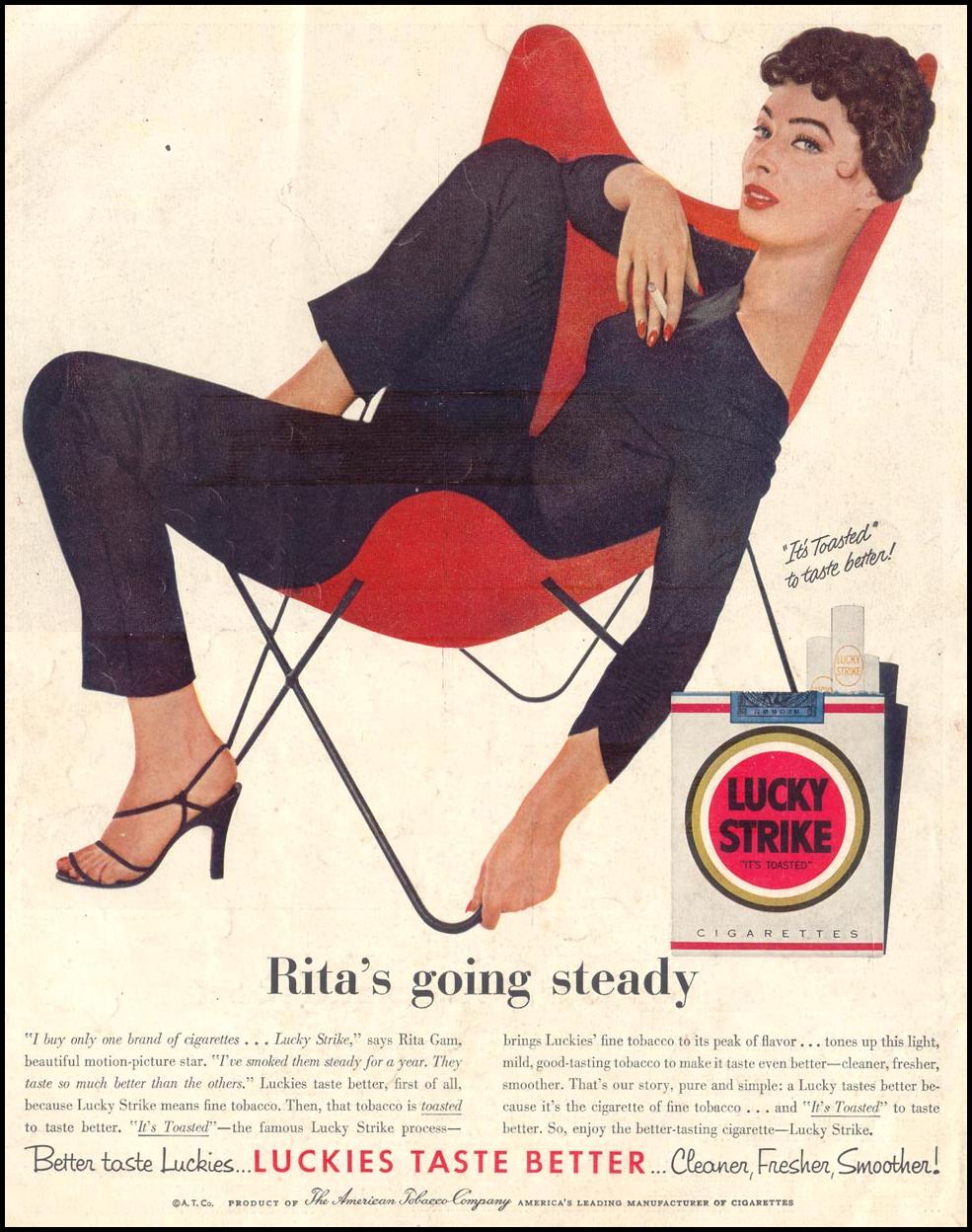

It also demonstrated the shift in marketing that moved away from need-based and towards want-based advertising, which generated a greater response from women. The anti-sweet campaign was revolutionary as it created consumers rather than simply luring women to favour a certain brand. Despite some diversity in terms of age, most advertisements used a youthful, beautiful, feminine, Caucasian woman that was well-dressed and often held middle or upper class status, which was reflective of the intended audience. The advertisements shifted the wording to state that Lucky Strike cigarettes would not bring a modern figure or reduce fat, but when tempted one should opt for the cigarette to avoid overindulgence often resulting in excess fat. Since it was deemed inappropriate to advertise tobacco consumption as a form of weight loss, Lucky Strike started telling women to avoid temptation to overindulge or the “Future Shadow.” The advertisements were aimed at demonstrating what would happen if women continued to overeat or indulge in sweets, thus implying the consumption of tobacco would prevent it. Women were seen as self-respecting if she improves her visual appearance, since physical identity was critical to the woman’s success or failure in life more broadly. It was often believed that it would control weight because smoking was an appetite suppressor, but it was also a dangerous and less healthful tactic to use. The advertisements were promoting an ideal image or body, and it glorified youth and slimness. It also reveals that men knew this tactic, which is part of the modern lifestyle. Luckies were made to have a toasted flavour to make them more appealing and can be used as an alternative to sweets. The advertisements promote the consumption of tobacco as a form of weight control as the ‘modern diet’ which it claims thousands of women are doing. In the first advertisement, the woman is blowing a kiss to the audience, and the caption reads “To keep a slender figure no one can deny,” likewise the one beside it states “I know an easy way to keep from getting fat.” Advertisers, especially Bernays, knew that women were driven by emotions, so by targeting weight and using words like slender or fat, the women would be more inclined to consume tobacco if she thought it would help control her weight. Lucky Strike advertisements that targeted women often used phrases specifically to appeal to thinness, which was often equated with health. Generally, the advertisements that focused on weight control by means of smoking often neglected to consider healthier options and often opted for the cigarette as a means of maintaining a ‘modern figure.’ The advertisements often depicted women in a stylish manner, which incorporated the tagline “It’s toasted,” based on the way in which the cigarettes were processed. However, it was eventually refocused to encourage women to refrain from overindulgence. Indeed, candy makers may have objected to the campaign infringed on their product. The underlying message of the “Reach for a Lucky” campaign was to encourage women to maintain a girlish figure by smoking instead of eating candy. The message was effective and far reaching, which resulted in increasing Lucky Strike’s market share by over 200%, and it became the best-selling brand until the 1950s. The Lucky Strike campaign “Reach for a Lucky instead of a sweet” was one of the first advertisement campaigns that targeted women. Further, women were more likely to endorse the strategy than men, and report using cigarettes as a weight loss method. Women often used smoking as a form of weight control, and it was common for young women to believe that smoking was correlated with thinness.

LUCKY STRIKE CIGARETTES MANUALS
Dieting manuals were placed inside Lucky Strike packages to encourage smoking as a form of weight control. Bernays insinuated a comprehensive campaign was necessary to ensure the thin body was perceived as socially desirable, especially to upper and middle-class women. To achieve this, he hired Edward Bernays to head the project.
LUCKY STRIKE CIGARETTES FREE
As slimness had become a staple of American society, along with bobbed hair and short skirts, Hill saw it as an opportunity to sell tobacco to women as a fat free way to satisfy hunger. In 1928, George Washington Hill, President of the American Tobacco Company, believed that in order to persuade women to consume tobacco products, advertisements had to focus on women’s waistline and dieting more generally.


 0 kommentar(er)
0 kommentar(er)
